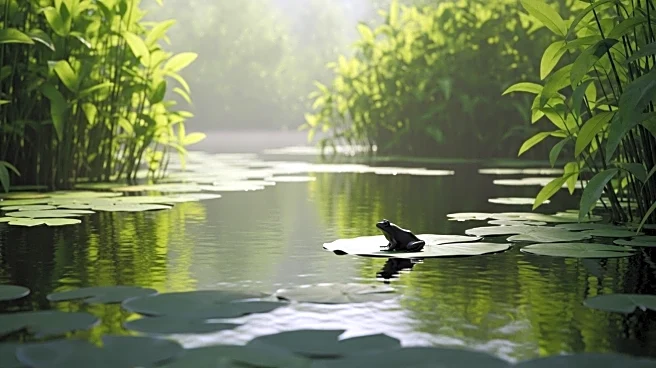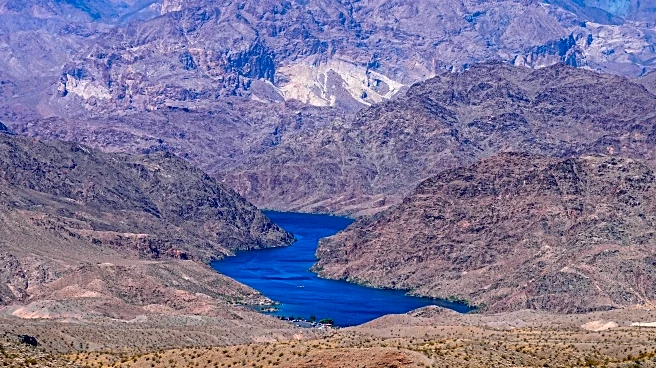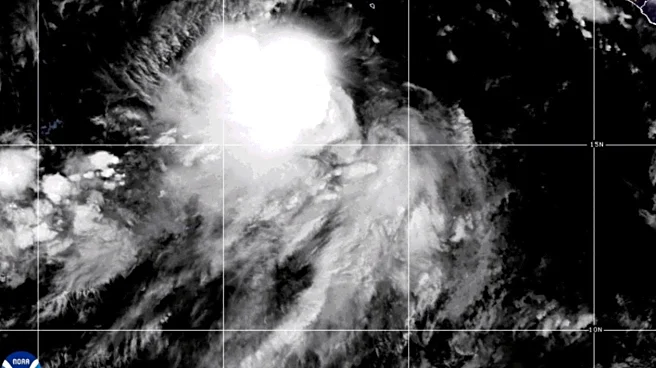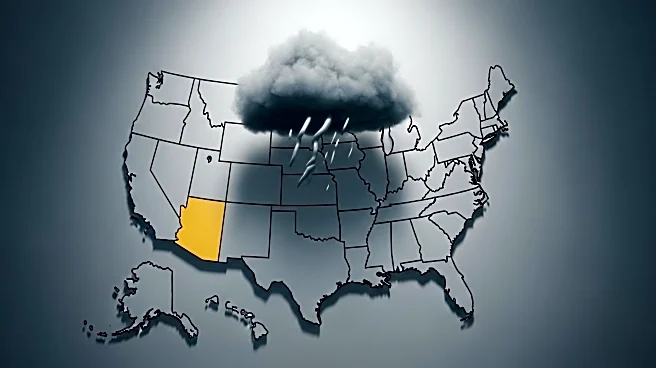What's Happening?
Efforts to restore the red-legged frog population in Southern California have shown promising results, thanks to a collaborative initiative involving biologists from the U.S. and Mexico. The red-legged frog, once abundant along the California coast, had nearly vanished due to habitat loss and the introduction of invasive bullfrogs. Biologists, including Adam Backlin, have been working to reintroduce the species by transplanting eggs from Baja California, Mexico, to Southern California. The use of artificial intelligence has been pivotal in monitoring the frogs' calls, confirming their presence and breeding success in restored habitats. This initiative is part of a broader effort to restore ecosystems across the U.S.-Mexico border, despite challenges posed by border policies.
Why It's Important?
The reintroduction of the red-legged frog is significant for biodiversity and ecosystem restoration in Southern California. The species plays a crucial role in the local food web and its recovery could help control mosquito populations, reducing the spread of diseases like dengue and Zika. The project highlights the importance of cross-border environmental cooperation, especially as border policies and infrastructure developments pose potential threats to wildlife. The use of AI in conservation efforts represents a growing trend in leveraging technology to monitor and protect endangered species, offering a model for similar initiatives worldwide.
What's Next?
The team plans to continue transporting egg masses from Baja California to further bolster the red-legged frog population in Southern California. They aim to establish thriving populations on both sides of the border, which could lead to a more resilient ecosystem. The use of AI and potential satellite technology will enhance monitoring capabilities, allowing for real-time responses to threats such as invasive species. This ongoing project could serve as a blueprint for future conservation efforts involving cross-border collaboration and technological innovation.
Beyond the Headlines
The success of this project underscores the potential for international cooperation in addressing environmental challenges. It also raises awareness about the impact of human activities, such as border wall construction, on wildlife habitats. The initiative demonstrates how science and technology can be harnessed to overcome ecological barriers and restore natural ecosystems, offering hope for other endangered species facing similar threats.













